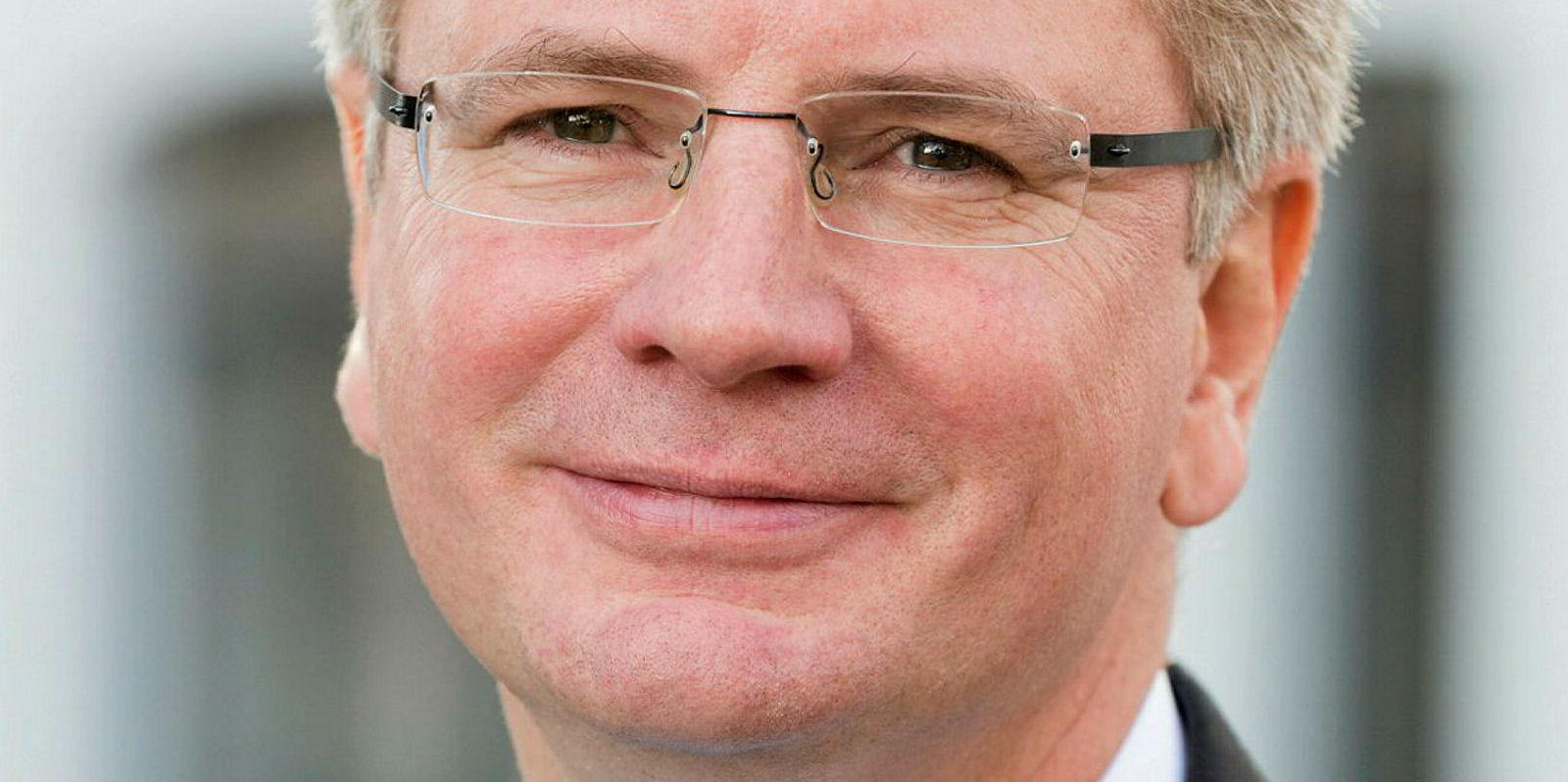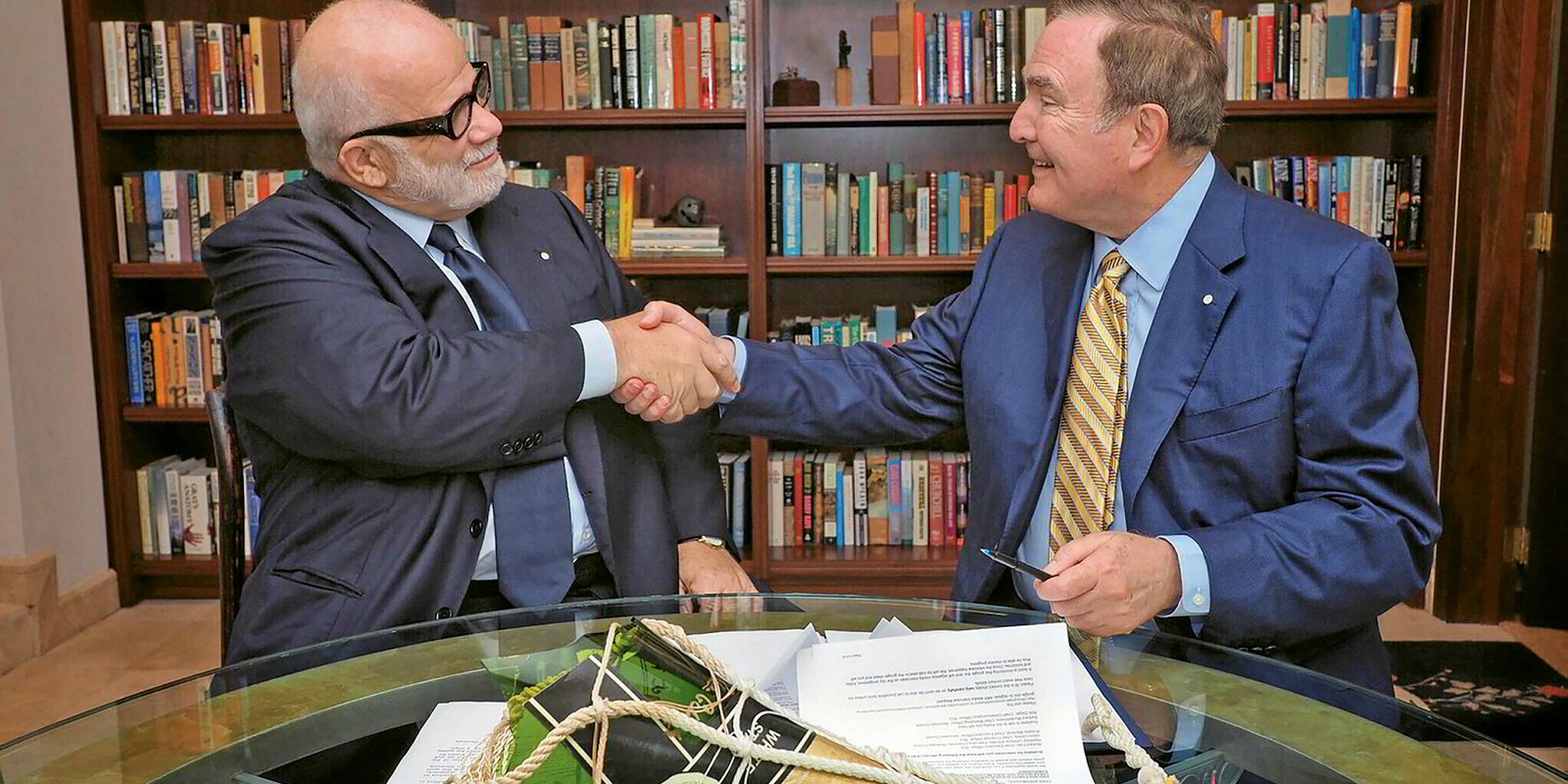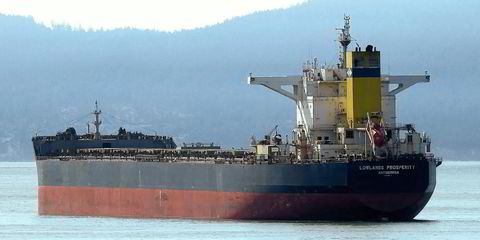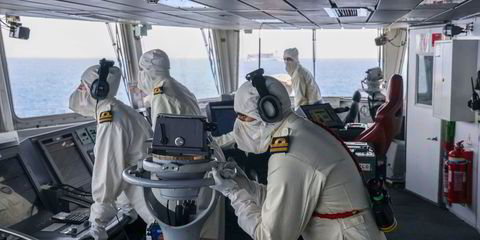Newbuilding orders at German shipyards remain at near record levels due largely to the ongoing boom in cruiseship orders, although long-established Flensburger Schiffbau-Gesellschaft has had to be bailed out of a liquidity crisis.
Full-year figures for 2018 have still to be published by the German Shipbuilding and Ocean Industries Association (VSM), but chief executive Reinhard Luken still expects the total to be around the all-time high of about €20bn ($22.6bn) logged at the halfway stage of last year.
That excludes naval shipbuilding, which remains important work in Germany and could also grow given the demand for warships in many parts of the world.
Cruiseships form the backbone of German shipbuilding in terms of euros. The sector is focused largely on Meyer Werft in Papenburg, which is busy until at least the end of 2023, and MV Werften with its three yards in Wismar, Rostock and Stralsund.
Also, the luxury yacht market, where individual values can be similar to small cruiseships, is picking up. Add other specialised tonnage such as ferries and dredgers to the equation and Germany is in a shipbuilding sweet spot.
This has led to trade unions pressing for more training.
Meyer Werft’s online jobs portal lists almost 190 vacancies, mainly in engineering and production.
MV Werften has more than doubled its workforce in the past three years as it builds production capacity and moves towards delivering its first oceangoing cruiseship in 2020 to Genting Hong Kong.
Shipbuilding is competing for workers in an already tight German labour market.
"Skilled labour is an issue for the entire economy,” Luken says.
The same applies on the equipment side because of healthy cruiseship orderbooks elsewhere in Europe and suppliers often feeding the same builders.
Luken says training figures are “promising”, if not sufficient to meet demand. Currently, there are around 1,200 blue-collar apprentices and a similar number of university-level students enrolled at shipbuilding facilities.
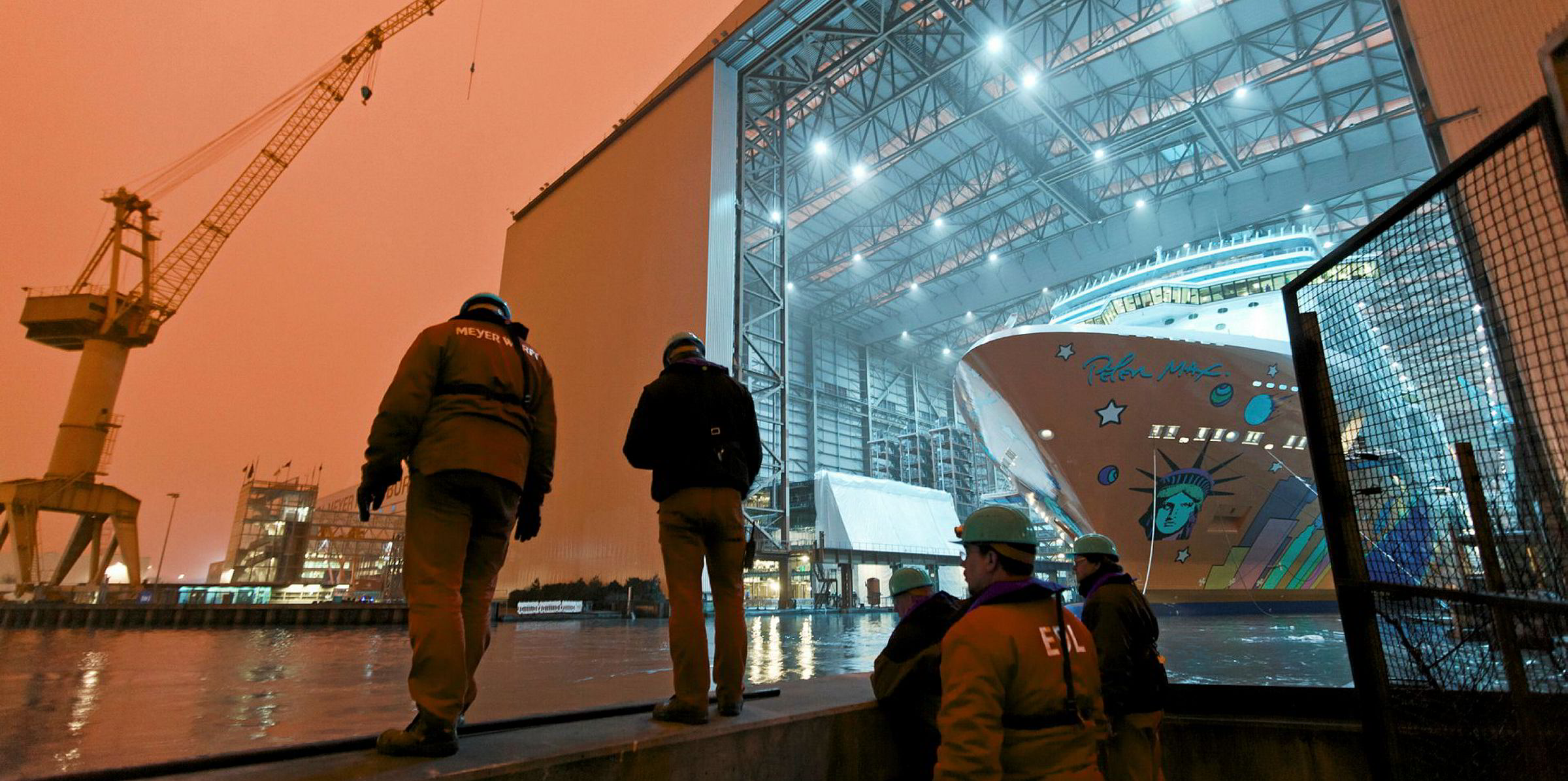
He says German shipbuilding has no problem “selling the story” to young people at a time when they have plenty of other job opportunities. Cruiseships are high tech and highly visible given the volume of commercials on prime-time television. In contrast, “you never see a containership on TV”, Luken notes, although Germany’s days of building standard cargo-carrying vessels are long gone.
There are exceptions such as Leer-based Ferus Smit, which has been building small boxships and tankers in recent times.
Among smaller German yards, Pella Sietas — bought and rescued by Russia’s Pella Shipyard in 2014 — is said to be busy with a mixed portfolio of contracts including ropax, dredger and small ferry tonnage.
The biggest shipyard employer in 2018 was Meyer Group — which includes Neptun Werft — with close to 4,000 employees, followed by submarine and naval surface-vessel builder ThyssenKrupp Marine Systems with almost 3,600 workers.
Genting Group, which includes Lloyd Werft Bremerhaven and MV Werften, has about 2,700 employees, and Lurssen Group has more than 2,600.
Lurssen, which has built more than 500 naval ships for export, including overseas under licence, has about 2,600 workers and is also a world-leading yacht builder.
Two years ago, it took over Blohm+Voss, which chief executive Peter Lurssen says is being readied to build the next German corvette programme, for which Lurssen is the main contractor.

Overall, according to VSM statistics, German yards employed almost 17,000 people in 2018, up 7.3% on a year earlier, and expected this year to top 17,500. During the boom years of 2000 to 2008, the yards employed more than 20,000 staff.
Those halcyon days for shipping saw orders for larger containerships placed because Far East yards were full. But today, Germany relies heavily on cruiseships and other passenger vessels, including at Flensburger, which has sought to reposition itself in the market by focusing on cruise ferries.
Flensburger also tried to revive its bread-and-butter ro-ro business after a loss-making foray into offshore well intervention, heavylift semi-submersible and seismic vessels.
Too many prototypes led to delays, which have continued with serious financial consequences, including the late delivery of Irish Ferries’ cruise ferry WB Yeats last year.
Flensburger managing director Rudiger Fuchs was replaced. The yard described delays, also involving an LNG-fuelled ropax for Brittany Ferries, as triggering substantial losses.
Earlier this month, financial investor Lars Windhorst's Sapinda Holding eased Flensburger's liquidity problems when it acquired 76% of the shares from owner Siem Europe and injected €33m ($37.23m) in fresh equity. Siem also converted €10m of outstanding debt into equity.
The €19.7bn German orderbook at the midway stage of 2018 — the most recent figure available — has more than doubled since 2013, when it stood at just over €9bn. But the annual inflow of new orders has slowed since 2016 when the figure peaked at €7.8bn.

